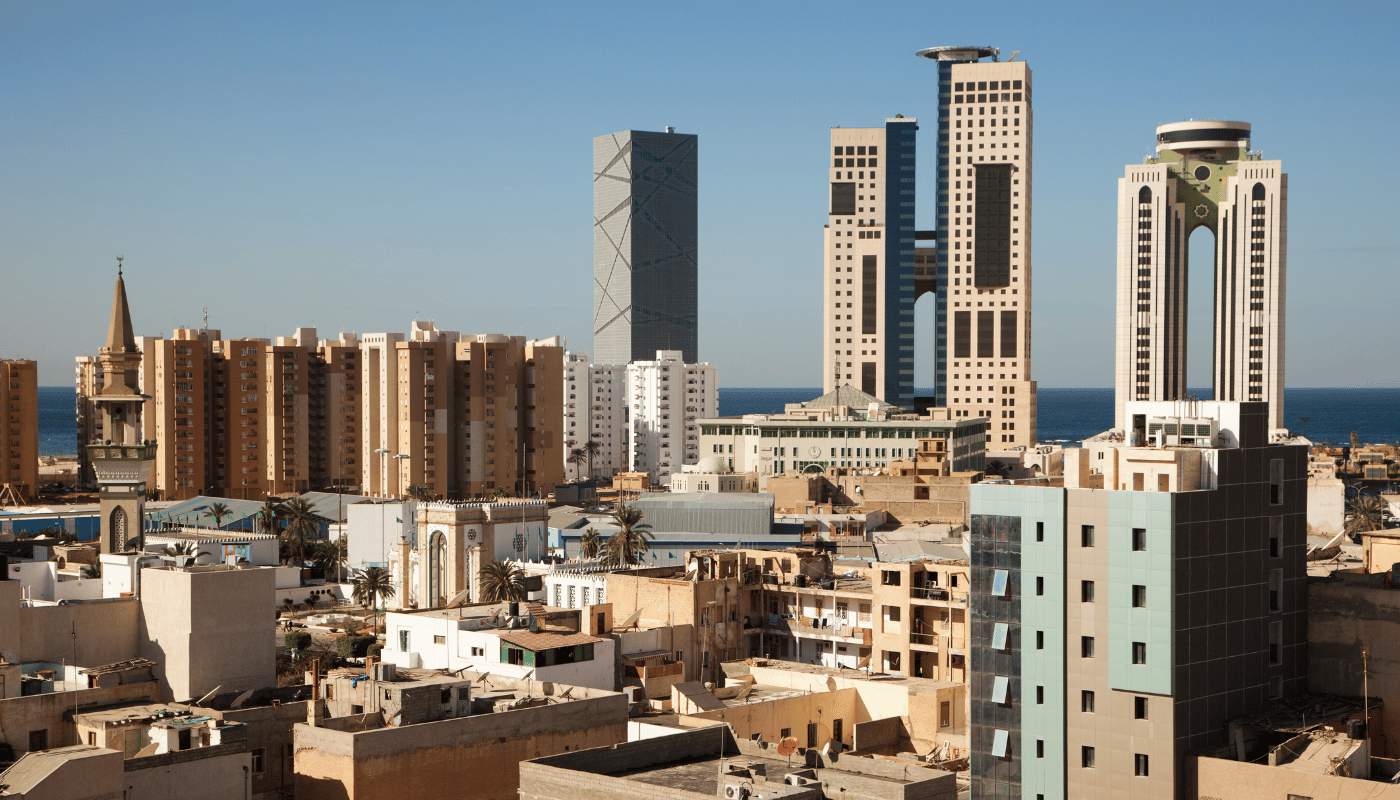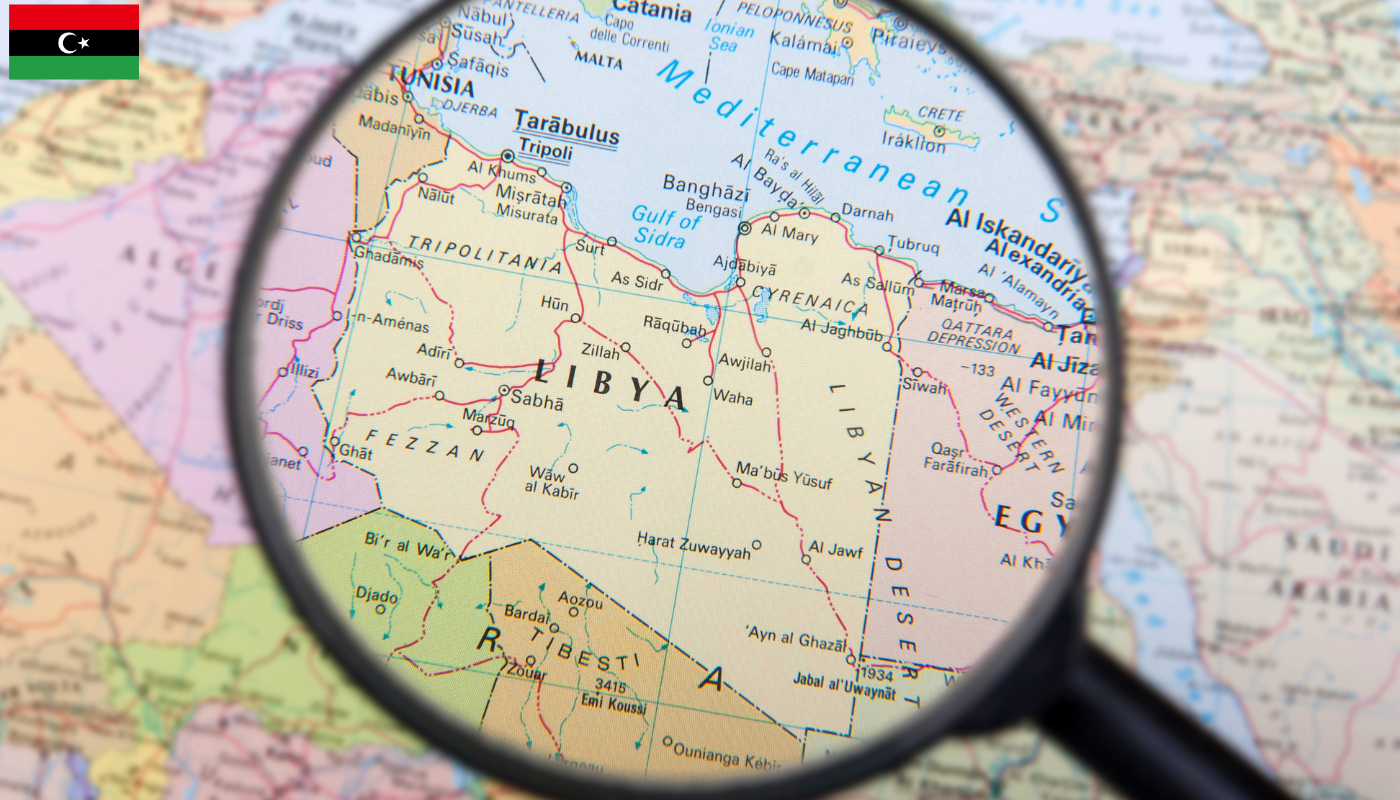Libya, a country with a rich tapestry of history stretching back to ancient times, stands as a testament to the enduring legacy of human civilization. From the sun-drenched sands of the Sahara to the Mediterranean’s azure shores, Libya’s fame transcends its natural beauty, delving into realms of historical significance, cultural depth, and architectural marvels. Join us as we explore what makes Libya a treasure trove of wonders, inviting the curious and the adventurous to discover its hidden gems and storied past.
Rich Ancient Greek and Roman Ruins
Libya, a country with a profound history and a rich cultural heritage, is home to some of the most remarkable ancient Greek and Roman ruins in the world. These archaeological sites not only showcase the architectural prowess of the ancients but also offer a window into the daily lives of people who lived thousands of years ago. Among these, the ruins of Cyrene and Leptis Magna stand out for their exceptional preservation and the insights they offer into ancient urban planning, art, and society.
The ancient city of Cyrene, founded by the Greeks in 631 BC, was once one of the principal cities in the Hellenic world, second only to Athens in its intellectual achievements. Its ruins, set against the backdrop of Libya’s lush Jebel Akhdar region, provide a breathtaking glimpse into the past. Visitors can explore the Temple of Zeus, which rivals Athens’ Parthenon in grandeur, and the agora, where philosophers once debated. Similarly, the Roman city of Leptis Magna represents one of the most beautiful cities of the Roman Empire, with its preserved marketplaces, amphitheater, and public baths, showcasing the luxuries of Roman civilization at its peak.
Beyond Cyrene and Leptis Magna, Libya’s landscape is dotted with other lesser-known ruins that tell tales of ancient glories and human endeavors. The remnants of Sabratha, with its stunning theater overlooking the Mediterranean, the prehistoric rock paintings in the Acacus Mountains, and the Byzantine churches in the eastern provinces, are testament to the diverse cultures and civilizations that thrived in this land. Each site offers a unique narrative, contributing to our understanding of human history and the interconnectedness of ancient societies.
Uncovering the Mysteries of Cyrene and Leptis Magna
Delving deeper into the heart of Libya’s ancient ruins, Cyrene and Leptis Magna emerge not just as archaeological sites but as beacons of the rich historical tapestry that Libya is part of. These cities, once bustling metropolises of the ancient world, continue to fascinate scholars and tourists alike with their complex urban layouts, intricate art, and monumental architecture. The preservation efforts and archaeological excavations undertaken in these areas have revealed fascinating details about ancient urban planning, religious practices, and social structures, offering profound insights into the human condition across millennia.
Preservation Challenges and Archaeological Revelations
The ongoing preservation of Libya’s ancient ruins presents a formidable challenge, yet it is crucial for safeguarding human heritage. The efforts to conserve these sites have not only protected them from natural decay and human destruction but have also led to remarkable archaeological discoveries. Each excavation uncovers a new layer of history, revealing intricate mosaics, statues, and artifacts that enrich our understanding of ancient Greek and Roman life. These findings underscore the importance of international cooperation and the need for continued research to unravel the mysteries still buried beneath the sands of Libya.
- Temple of Zeus in Cyrene – A rival to Athens’ Parthenon
- Leptis Magna’s Amphitheater – A testament to Roman architectural genius
- Sabratha Theater – Overlooking the Mediterranean with unmatched beauty
- Prehistoric Rock Paintings of the Acacus Mountains – Offering a glimpse into early human art
- Byzantine Churches in Eastern Libya – Reflecting the spread of Christianity across the Roman Empire
Vast and Mysterious Sahara Desert
The Sahara Desert, spanning several countries across North Africa, holds a particularly enigmatic presence in Libya. Encompassing approximately 90% of the country, the Libyan Sahara is not just a barren wasteland but a mosaic of dramatic landscapes, ancient history, and rich cultures. This desert is home to some of the most spectacular and diverse ecosystems on the planet, as well as archaeological sites that offer a glimpse into humanity’s ancient past.
Among its rolling sand dunes and stark, majestic plateaus, the Sahara hides natural wonders such as the Akakus Mountains, renowned for their prehistoric rock art, and the idyllic oasis towns like Ghadames, known as the “pearl of the desert”. These sites, alongside the desert’s vastness, evoke a sense of timelessness and mystery. The Sahara’s extreme conditions have also shaped the resilient and nomadic cultures of the Tuareg and Berber peoples, who have navigated this harsh landscape for centuries, developing a profound connection with their environment.
The Libyan Sahara is also a treasure trove of geological wonders. The region of Al-Kufrah, for example, is famous for its enormous basins of subterranean water, making life possible in this arid zone. Meanwhile, the Waw al-Namus, a remote volcanic crater surrounded by a blackened field of lava and three contrasting lakes, offers a striking visual contrast to the golden sands that dominate the landscape. These natural phenomena not only contribute to the Sahara’s mystique but also offer valuable insights into Earth’s geological history and the adaptability of life in extreme conditions.
Archaeological Riches beneath the Sands
Diving deeper into the heart of the Sahara, the desert reveals its historical secrets through numerous archaeological sites scattered across Libya. From the prehistoric rock art in the Akakus Mountains to the remnants of the Garamantes civilization in Germa, these sites tell stories of human adaptation, survival, and creativity in one of the most challenging environments on Earth. The desert serves not only as a guardian of these ancient treasures but also as a reminder of the transience of human civilizations.
Conservation Efforts in the Sahara
Preserving the Sahara’s natural and historical heritage has become a critical challenge in the face of modern threats such as climate change, overgrazing, and the illegal trafficking of artifacts. Conservation initiatives are crucial to safeguarding the future of this unique region, ensuring that its landscapes, ecosystems, and archaeological sites remain a source of wonder and knowledge for generations to come.
| Feature | Location | Description |
|---|---|---|
| Akakus Mountains | Southwest Libya | Prehistoric rock art and dramatic sandstone formations. |
| Ghadames | Northwest Libya | Ancient oasis town known as the “pearl of the desert”. |
| Al-Kufrah Oasis | Southeast Libya | One of the largest oases in the Sahara, vital for regional water supply. |
| Waw al-Namus | Central Sahara | Volcanic crater with three lakes, surrounded by a field of black lava. |
| Germa | Central Libya | Ancient capital of the Garamantes civilization, rich in archaeological finds. |
Unique and Flavorful Libyan Cuisine
Libyan cuisine is a rich tapestry that weaves together the flavors and culinary traditions of the Mediterranean, Africa, and the Middle East, creating a unique and vibrant gastronomy that is both diverse and distinctive. At the heart of Libyan cooking lies the use of fresh ingredients, bold spices, and the art of combining sweet and savory elements to create dishes that are full of flavor and depth.
One cannot discuss Libyan cuisine without mentioning its most famous dish, Couscous. This staple, made from steamed semolina, is often served with lamb or vegetables and a rich, spicy broth, embodying the essence of Libyan flavor profiles. Equally important is the beloved Bazeen, an unleavened bread made from barley, water, and salt, traditionally served with a tomato sauce, boiled eggs, potatoes, and camel or lamb meat. Another notable dish is Mbakbaka, a spicy pasta dish that showcases the Libyan love for combining pasta with a fiery and aromatic sauce.
Libyan cuisine also offers a variety of soups and stews, with Sharba Libiya, a spicy lamb soup, standing out for its complexity and richness. The soup is thickened with chickpea flour and flavored with a blend of spices that include cinnamon, turmeric, and cayenne, demonstrating the Libyan knack for creating dishes that are both hearty and bursting with flavor.
Signature Dishes of Libyan Cuisine
| Dish | Main Ingredients | Flavor Profile |
|---|---|---|
| Couscous | Semolina, Vegetables, Lamb | Spicy, Hearty |
| Bazeen | Barley, Tomato Sauce, Meat | Savory, Tangy |
| Mbakbaka | Pasta, Spicy Tomato Sauce | Spicy, Aromatic |
| Sharba Libiya | Lamb, Spices, Chickpea Flour | Rich, Spicy |
| Asida | Wheat Flour, Butter, Honey | Sweet, Creamy |
The richness of Libyan cuisine is not only found in its main courses but also in its desserts and bread. Asida, a simple yet indulgent dessert made from wheat flour, butter, and honey, exemplifies the Libyan love for sweets that are straightforward but deeply satisfying. The culinary landscape of Libya is a testament to its history, geography, and the creativity of its people, offering an array of dishes that are as diverse as they are flavorful.
Influential Oil Reserves and Production
Libya, a country located in the North African region, is renowned globally for its vast and influential oil reserves and production capabilities. This nation possesses the largest proven oil reserves in Africa, making it a key player in the global energy market. The discovery of oil in Libya in the late 1950s transformed the country’s economy and positioned it as a significant oil exporter. The oil sector now accounts for a substantial portion of Libya’s GDP, government revenue, and export earnings, emphasizing its critical role in the nation’s economic stability and growth.
The extraction and export of crude oil are central to Libya’s economy, with the country’s oil fields connected to various ports through an extensive network of pipelines, facilitating efficient transportation and export operations. Despite facing challenges such as political instability and conflicts that have impacted production levels and global oil prices, Libya’s oil industry continues to be a cornerstone of its economy. The nation’s membership in the Organization of the Petroleum Exporting Countries (OPEC) further underscores its significance within the global oil market, influencing production quotas and oil price strategies.
Moreover, Libya’s strategic location along the Mediterranean Sea offers advantageous logistics for oil exports to European and other markets, enhancing its role as a key oil supplier. The future of Libya’s oil industry is poised for growth, with potential for exploration and development of new oil fields, coupled with investments in infrastructure and technology to boost production efficiency and sustainability. As the world continues to navigate the complexities of energy demand and supply, Libya’s oil reserves and production capabilities remain pivotal in shaping global energy dynamics.
- Libya has the largest proven oil reserves in Africa.
- The discovery of oil in the late 1950s transformed Libya’s economy.
- Oil exports are a significant source of GDP, government revenue, and export earnings for Libya.
- Libya is a member of the Organization of the Petroleum Exporting Countries (OPEC).
- The country’s strategic location facilitates efficient oil exports to European and other markets.
Traditional Berber Crafts and Culture
The Berber communities of Libya have long been celebrated for their remarkable contributions to the cultural fabric of the nation, particularly through their traditional crafts and vibrant cultural expressions. At the heart of this rich cultural heritage are the handwoven textiles, pottery, and jewelry, items not only of practical use but also of significant cultural symbolism. The intricate patterns and designs found in Berber crafts are more than mere decoration; they are a language of their own, telling stories of the community’s history, beliefs, and the natural world around them.
Among these crafts, the art of weaving holds a place of particular importance. Utilizing looms that have been passed down through generations, Berber weavers create stunning carpets, shawls, and tents. These items are renowned not only for their aesthetic beauty but also for their durability and the skill required to make them. Similarly, Berber jewelry, crafted from silver and adorned with precious stones, is sought after for its unique designs and deep cultural significance, often serving as amulets or symbols of status within the community.
The preservation of Berber culture is also evident in their vibrant festivals and traditional music, which continue to play a significant role in the community’s social life. These cultural expressions offer a window into the Berber’s rich heritage, showcasing a resilience and creativity that has allowed them to maintain their identity across centuries.
Key Berber Crafts and Their Cultural Significance
| Craft | Description | Cultural Significance |
|---|---|---|
| Weaving | Handwoven textiles including carpets and shawls. | Symbolizes community stories and beliefs. |
| Pottery | Earthenware items with distinctive Berber patterns. | Represents the connection to the land and ancient traditions. |
| Jewelry | Silver pieces often adorned with precious stones. | Used as amulets and symbols of status within the community. |
| Music | Traditional songs and instruments. | Plays a key role in social and ceremonial occasions. |
| Festivals | Community celebrations featuring music, dance, and food. | Important for the preservation and transmission of culture. |
In conclusion, the traditional Berber crafts and culture of Libya stand as a testament to the enduring spirit and artistic ingenuity of the Berber people. By continuing to celebrate and preserve these traditions, not only does the Berber community maintain its connection to the past, but it also enriches the cultural landscape of Libya as a whole. As we unveil the secrets of what Libya is famous for, the profound legacy of its Berber inhabitants cannot be overstated, offering insights into a world where art, culture, and history intertwine.






